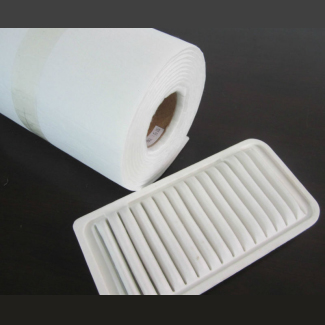Nov . 20, 2024 10:15 Back to list
rubber
The Fascinating World of Rubber A Journey Through Its Origins, Uses, and Innovations
Rubber is a remarkable material that plays an indispensable role in our daily lives. From the tires on our vehicles to the soles of our shoes, rubber's versatility and resilience make it an essential component in various industries. To fully appreciate rubber, it's essential to understand its origins, production processes, and myriad applications.
The story of rubber begins in the lush rainforests of South America, where indigenous cultures have been utilizing the sap of the rubber tree, Hevea brasiliensis, for thousands of years. The ancient peoples would extract this milky latex from the tree's bark, allowing it to coagulate to create a waterproof material used in various applications, from waterproofing canoes to making balls for games. The discovery of rubber in the West, attributed to European explorers in the 18th century, sparked significant interest and led to rubber's commercialization.
In the early 19th century, rubber gained prominence when Charles Goodyear discovered the process of vulcanization, which involves heating rubber with sulfur. This crucial advancement transformed rubber into a durable, elastic material that could withstand various environmental conditions. Vulcanized rubber quickly became essential in numerous applications, paving the way for the modern rubber industry.
Today, rubber is primarily produced in two forms natural and synthetic. Natural rubber continues to be sourced from rubber trees, mainly in tropical regions such as Southeast Asia, Africa, and Latin America. Conversely, synthetic rubber is created through chemical processes using petroleum byproducts. The development of synthetic rubber during World War II was a turning point, as it addressed the rubber shortages caused by disrupted supply chains and introduced new types of rubber with specific properties tailored for diverse applications.
The uses of rubber are ubiquitous and span a wide range of industries
. The automotive sector relies heavily on rubber for tires, seals, and gaskets. The demand for increasingly fuel-efficient vehicles has led to innovations in tire technology, including the development of low rolling resistance tires that improve fuel economy while maintaining safety and performance.rubber

In addition to automotive applications, rubber is pivotal in the realm of healthcare. Medical gloves, catheters, and various medical devices often utilize latex or synthetic rubber to ensure safety and hygiene. The COVID-19 pandemic underscored the critical importance of rubber products in healthcare, leading to increased demand for gloves and personal protective equipment.
In the consumer goods sector, rubber's utility extends to products like footwear, clothing, and household items. The flexibility and durability of rubber make it ideal for everything from stylish sneakers to high-performance sports gear. Moreover, rubber flooring has become a popular choice in gyms and playgrounds due to its shock-absorbing properties, making it safer for users.
As we move into an era focused on sustainability, the rubber industry is also making strides towards more eco-friendly practices. The cultivation of natural rubber can lead to deforestation and environmental degradation, prompting efforts to improve sustainability in rubber production. Innovations such as synthetic alternatives derived from renewable sources or biodegradable materials are gaining traction and aim to reduce the environmental impact of rubber usage.
Recycling is another area of focus; used rubber products can be repurposed into crumb rubber, which is used in playgrounds, asphalt mixtures, and landscaping projects. This not only extends the lifespan of rubber materials but also helps minimize waste in landfills.
In conclusion, rubber is a remarkable substance with a rich history and a broad range of applications that continue to evolve. From its humble beginnings in the Amazon rainforest to modern innovations enhancing performance and sustainability, rubber has firmly established its place in both everyday life and industry. As technology progresses, we can expect to see even more advancements in rubber products that prioritize not only functionality and convenience but also environmental responsibility, ensuring that this versatile material can be enjoyed by future generations.
-
High-Efficiency Paper Pleating Machine for Filters Trusted Filter Paper Pleating Machine Company
NewsJul.07,2025
-
High-Performance Oil Filter for Cadillac ATS – Reliable Engine Protection Solutions
NewsJul.07,2025
-
High Quality PU Glue for Filters – Reliable Filter Glue Supplier & Exporter Get PU Glue Quotes Now
NewsJul.07,2025
-
China PLJL-4 Seal Leakage Tester for Spin-On Filter - High-Precision Multi-Station Testing Solutions
NewsJul.06,2025
-
CE Certification Auto/Truck Filter Paper Supplier – Premium Filtration Solutions for Vehicles
NewsJul.06,2025
-
OEM PLGY-500 HDAF Mesh-Ends Hooking and Pressing Machine - High Efficiency, Precision, Reliable Performance
NewsJul.06,2025
